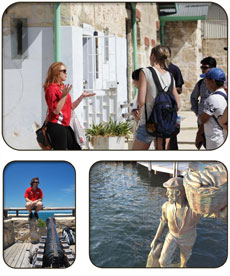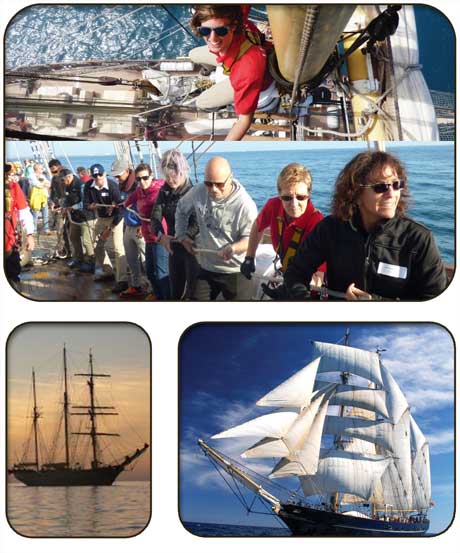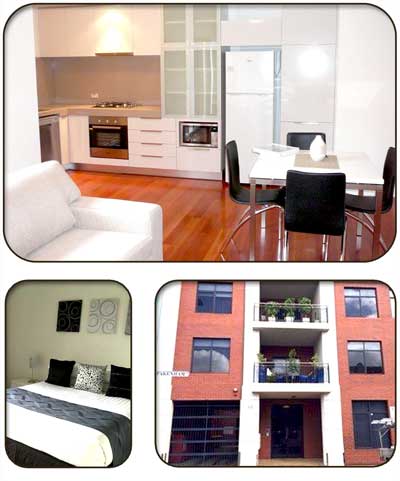
Fremantle History: 1829 to WW2 (1945)
Fremantle History: 1829 to WW2 (1945)
Arrival in Fremantle
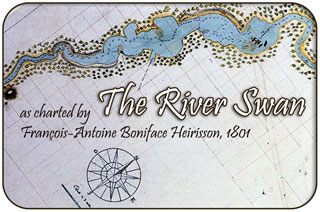 Fremantle, as it is known today, officially 'began' in April 1829 when the ship HMS Challenger arrived in the waters off the Western Australian coast near the mouth of the Swan River and formally 'took possession' of the land which was then named "New Holland" for King George the 4th of England.
Fremantle, as it is known today, officially 'began' in April 1829 when the ship HMS Challenger arrived in the waters off the Western Australian coast near the mouth of the Swan River and formally 'took possession' of the land which was then named "New Holland" for King George the 4th of England.
Close thereafter Captain James Stirling (portrait below) arrived from England to begin the Swan River Colony of Perth (in 1829).
It was Captain Stirling who named the port settlement 'Fremantle' after Captain Fremantle, the captain of the HMS Challenger.

Settling the "Free" Swan River Colony
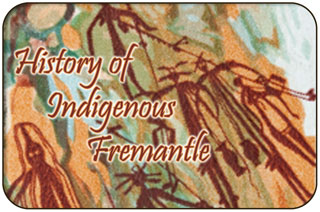
Fremantle, or as it was first known as “The Swan River Colony" and founded in 1829 and established as a "free settlement" when approximately four hundred settlers (civilian and military) arrived on the HMS Sulphur and Parmelia in June 1829.
Fremantle's beginning was different from other colonies that had already been established in the east (New South Wales), because it was originally populated by people who migrated by choice.
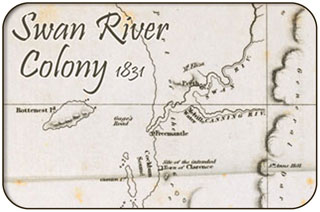
It was a military and civilian settlement, not a settlement for convicts - at least not yet. They had a challenging time entering Cockburn Sound, both ships sustaining damage from rocks, and Parmelia was run aground, but arrived safely.
In looking over the list of passengers on the Parmelia (the ship chartered by the English government to carry passengers) we noticed many positions of people who were to carry out the duties in the new settlement.
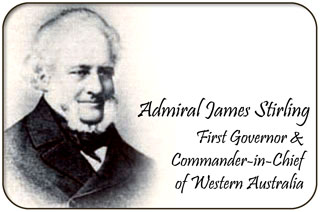
A Harbourmaster, Surveyor and Assistant, Horticulturalist +6 children, Surgeon, Assistant Surgeon +5 children, Bricklayer +6, Blacksmith +3, and Boatbuilder. I tried to imagine the voyage from England to Western Australia... four months aboard a 36metre vessel. I could not. The boat to Rottnest is fun enough!
By 1832 there were fifteen hundred people in the 'Swan River Colony'.
During those first 20-30 years life was very hard for the new settlers. The issue was one of fertility.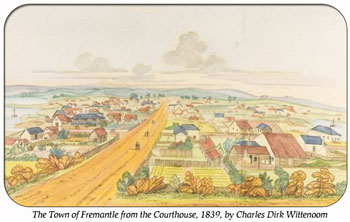
The Swan River simply winds through a sandy flat. Not only was the vegetation hard to clear, but once it was clear, it wasn't 'good earth', just lots of sand.
The reports received back in England were not good. Of course, people decided to migrate elsewhere which caused even more problems. Manpower was needed to build the vital communications, transport and administrative framework if the colony was to succeed.
There was a depression in 1843 which almost ended the colony forever, however at the suggestion of the York Agricultural Society in 1847;
"That it is the opinion of this meeting that, inasmuch as the present land regulations have entirely destroyed our labour fund, we conceive that the Home Government are bound in justice to supply us with some kind of labour, and after mature deliberations we have come to the determination of petitioning the Secretary of State for the Colonies for a gang of forty convicts to be exclusively employed in public work." Wikipedia
From Free Colony to Penal Colony, The History of Fremantle, WA

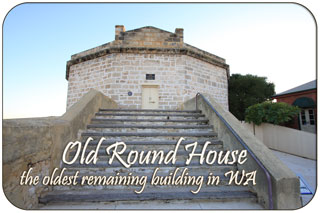
The English ended the 'free' status of the colony for all intents and purposes before 1850. Between 1842 and 1850 two hundred and thirty four juvenile offenders were transported to Western Australia on seven ships, but assuming they apprenticed themselves to local tradesmen they were considered free.
The settlers were not happy about the proposition of turning the colony into a penal colony. They were concerned that that it was against the founding ‘free’ principles of the colony - what had been ‘promised’ to them in England. They opposed the arrival of convicts as they felt they would bring stigma and trouble.
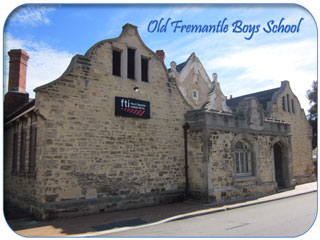 The decision, was made regardless of the public opinion or promise, and in November 1849 it was officially announced that The Swan River Colony had been ‘constituted a penal settlement’ to accelerate the economic growth.
The decision, was made regardless of the public opinion or promise, and in November 1849 it was officially announced that The Swan River Colony had been ‘constituted a penal settlement’ to accelerate the economic growth.
The first 75 convicts arrived in 1850 on the ‘Scindian’ from Portsmouth to be followed by over nine thousand more convicts before 1868.
All of the prisoners were men, and all of them had almost finished their prison sentences. They were considered less-disruptive and more easily manipulated. This started the quick construction of buildings including the Round House, the Commissariat, the Kerosene Store (now the Kidogo Art House), the Fremantle Boys School and the Lunatic Asylum now the Fremantle Arts Centre.
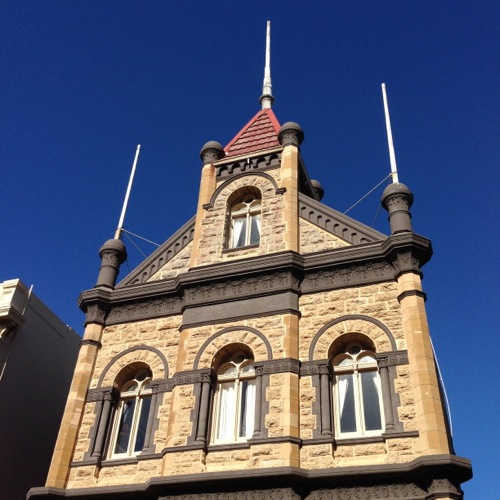
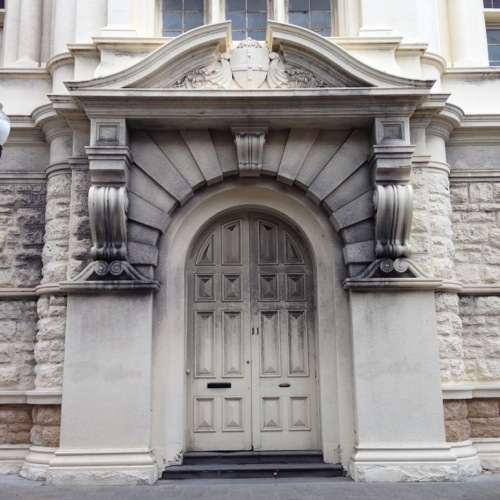
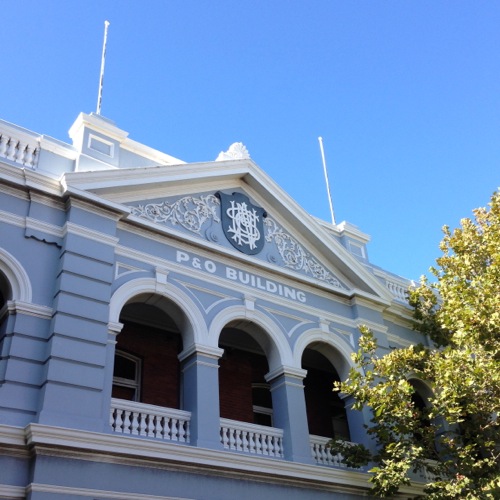
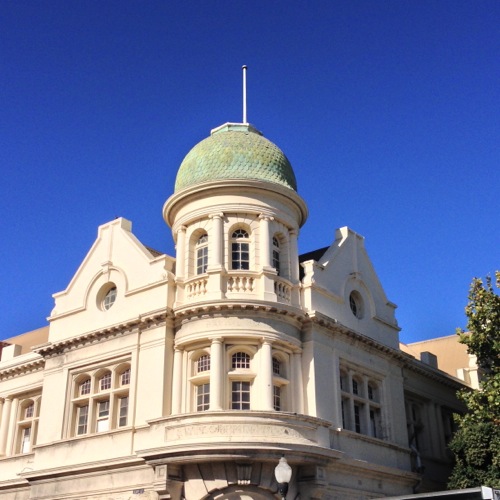

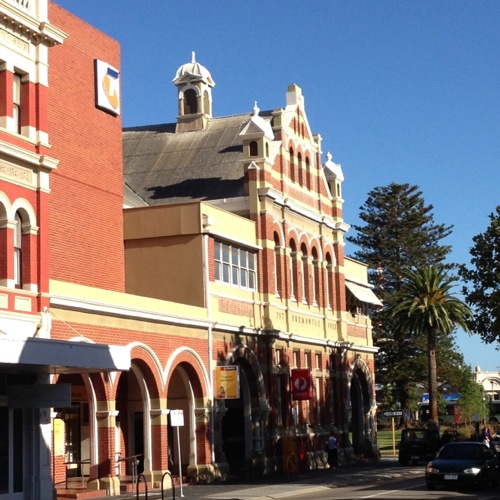
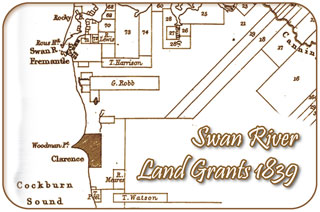
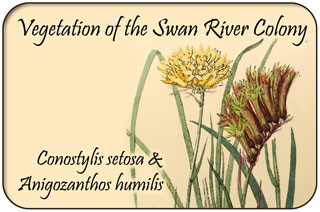
43 Voyages of Convicts to Fremantle
Forty three voyages were made from England to Fremantle carrying more than nine thousand convicts. Two thirds of the convicts stayed in the colony after their prison terms were up and by 1868 the population had quadrupled to 22,738. For the next twenty years, until the 1870's, the economy of the colony (now officially part of Western Australia) was based on wheat, meat and wool. In the early 1850's a Police Force was set up and the Warden’s Cottages were built. These Heritage buildings can still be seen in Henderson Street today!

In the latter half of the 1800's there was much economic growth. The Perth to Fremantle railway was opened in 1881. The Literary Institute was created, the Town Hall built and gas street lamps were installed on the streets in 1887. In 1888 the first telephone exchange was located in the Town Hall closely followed by the water supply in 1890. In 1897 the hospital, harbour and markets were opened.

The Gold Rush of the 1890’s
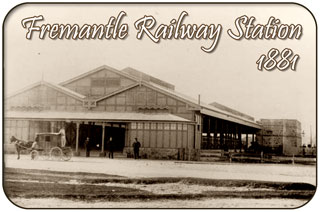 Gold was discovered and prospectors arrived searching out new goldfields. The Gold Rush of the 1890’s saw Fremantle firmly established as a gateway to Western Australia.
Gold was discovered and prospectors arrived searching out new goldfields. The Gold Rush of the 1890’s saw Fremantle firmly established as a gateway to Western Australia.
By attracting prospectors and enabling trade to grow the Gold Rush increased agricultural output and generated extraordinary wealth. The flood of goods and gold seekers brought many new businesses to the port, which is still today a thriving and affluent community. The gold rush also brought the first major arrival of willing immigrants ready and able to work. The style of some of the buildings of that period are clearly reflected with a higher level of luxury and splendour like the Esplanade Hotel, which today still offers top class luxury accommodation in Freo.
The Port of Fremantle - a long history

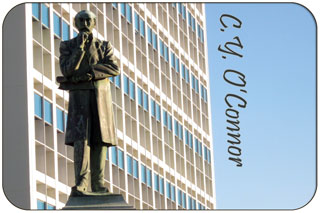 Fremantle's port role began immediately the Swan River Colony was founded in 1829, but the entrance to the Swan River estuary was blocked by a rocky bar, which made the mouth of the river virtually impassable for sea-going vessels.
Fremantle's port role began immediately the Swan River Colony was founded in 1829, but the entrance to the Swan River estuary was blocked by a rocky bar, which made the mouth of the river virtually impassable for sea-going vessels.
The first steamship to enter the port was H.M.S. Driver on 4 December 1845. The kilometre long 'Long Jetty' was the primary port facility until the harbour was opened in 1897.
Fremantle shipping was served by the Long Jetty that extended into the open sea, where Bather's Beach is today. Cargo was offloaded onto the jetty and then taken down Cliff Street in Fremantle's West End. It was loaded onto barges that sailed up the river on the westerly sea breeze and back to Fremantle on easterly winds. Later it was transported by rail. Sailors disliked the Long Jetty: in 1892 Captain D.B. Shaw of the Saranac described it as "terrible":
"…entered and fought against putting the vessel alongside jetty to discharge. It is a terrible place. No place to put a vessel. No shelter whatever. All the ships have to lay and discharge at the wharf or pay lighterage… It is blowing a gale from the SW…and takes all our time to hold her… She had done considerable damage to herself… It is certainly the worst place I or anyone else ever saw. No place to send a ship of this size… Any man who would come or send a ship a second time is a damned ass."
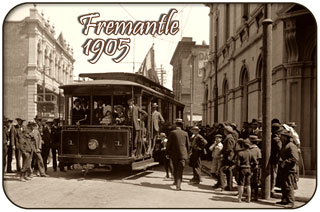 British marine engineer Sir John Coode advised Sir John Forrest an outer harbour near Rous Head, or one that would stretch south from Arthur's Head, could be built. Coode ruled out building a port in the river mouth as he believed it would continually silt up due to lateral sand drift.
British marine engineer Sir John Coode advised Sir John Forrest an outer harbour near Rous Head, or one that would stretch south from Arthur's Head, could be built. Coode ruled out building a port in the river mouth as he believed it would continually silt up due to lateral sand drift.
In 1887 the Fremantle Chamber of Commerce pushed hard for the southern scheme to be chosen, but the Colony could not raise the half-million pounds which were estimated what such an initiative would cost. By 1891 Forrest was examining another proposal: an offshore facility at Owen Anchorage south of Fremantle.
But by then Charles Yelverton O'Connor had been appointed the Colony's Engineer-in-Chief, and decided the best option was an inner harbour built in the mouth of the Swan River.
The discovery of gold in Western Australia meant a working port was urgently needed, Parliament finally accepted O'Connor's plan after much political haggling, the capital was raised in London and preliminary work commenced late in 1892.
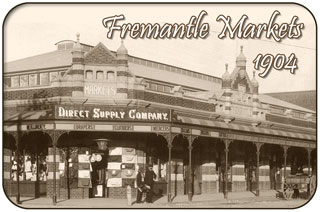 The first stage of the harbour works began with a ceremony in which the Governor's wife, Lady Robinson, tilted the first truck load of rubble for the North Mole. Blasting and dredging the rocky bar created a channel, dredging deepened the river basin, and two moles were built to protect the harbour entrance.
The first stage of the harbour works began with a ceremony in which the Governor's wife, Lady Robinson, tilted the first truck load of rubble for the North Mole. Blasting and dredging the rocky bar created a channel, dredging deepened the river basin, and two moles were built to protect the harbour entrance.
Land was reclaimed so quays and warehouses could be built. The inner harbour was opened on May 4, 1897 when the steamer Sultan with Lady Forrest at the wheel was the first ship to enter the partly built port. "While the harbour has been deepened, and facilities extended and modernised over the years, the basic structure of the Inner Harbour remains essentially unchanged to this day, testament to the boldness, brilliance and foresight of its designer." [wikipedia]
Fremantle from 1911 Encyclopaedia Brittanica
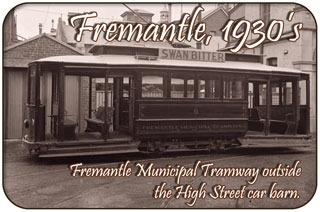 FREMANTLE, a seaport of Swan county, Western Australia, at the mouth of the Swan river, 12 m. by rail S.W. of Perth. It is the terminus of the Eastern railway, and is a town of some industrial activity, shipbuilding, soap-boiling, saw-milling,, smelting, iron-founding, furniture-making, flour-milling, brewing and tanning being its chief industries.
FREMANTLE, a seaport of Swan county, Western Australia, at the mouth of the Swan river, 12 m. by rail S.W. of Perth. It is the terminus of the Eastern railway, and is a town of some industrial activity, shipbuilding, soap-boiling, saw-milling,, smelting, iron-founding, furniture-making, flour-milling, brewing and tanning being its chief industries.
The harbour, by the construction of two long moles and the blasting away of the rocks at the bar, has been rendered secure. The English, French and German mail steamers call at the port. Fremantle became a municipality in 1871; but there are now three separate municipalities— Fremantle, with a population in 1901 of 14,704; Fremantle East (2494); and Fremantle North (3246). At Rottnest Island, off the harbour, there are government salt-works and a residence of the governor, also penal and reformatory establishments. [wikisource; Wikisource 1911 Encyclopedia project]
Fremantle in World War II
 Allied Forces Submarine Base During World War II, the Fremantle harbour accommodated scores of Allied naval vessels on active service.
Allied Forces Submarine Base During World War II, the Fremantle harbour accommodated scores of Allied naval vessels on active service.
Battleships, troop transports, hospital ships and support vessels, including many passenger ships, were seconded into the war effort.
Visitors to Fremantle during the conflict were passenger liners and converted troop carriers RMS Queen Elizabeth and RMS Queen Mary. Because of their size neither was able to take up an inner harbour berth, and instead anchored in Gage Roads.
Other well-known ships to visit included the RMS Strathaird, RMS Strathnaver, RMS Orion and RMS Otranto.
In 1940 boom defences were installed in the harbour as a security measure and anti-aircraft installations were built. After the fall of Singapore in March 1942, many ships sought refuge at Fremantle: at times 30 were at anchor in Gage Roads. [wikipedia]
We would recommend visiting the HMAS Ovens, Oberon Class Sumarine at the WA Maritime Museum on the Fremantle Waterfront!
Fremantle Submarine Base was the largest submarine base in the Southern Hemisphere during World War II.
 The first United States submarines arrived at Fremantle in 1942, the US Navy built a submarine repair facility on North Quay the next year, and until 1945 the port accommodated more than 170 submarines from the U.S., British and Dutch navies. The slipway on the south side of the entrance to the harbour where the new Western Australian Maritime Museum is now located was also an important part of the wartime role of the harbour. [wikipedia]
The first United States submarines arrived at Fremantle in 1942, the US Navy built a submarine repair facility on North Quay the next year, and until 1945 the port accommodated more than 170 submarines from the U.S., British and Dutch navies. The slipway on the south side of the entrance to the harbour where the new Western Australian Maritime Museum is now located was also an important part of the wartime role of the harbour. [wikipedia]
Walking Tours of Fremantle – the essential start to any visit.
Get a taste of what it is like to be on board a barquentine tall ship - a truly unique and memorable experience.
Stay in Fremantle's West End
Apartments between Pakenham Street and Henry Street, two of the best streets in Fremantle’s lively West End.
A summary of Indigenous History of WA
Before European colonisation The Noongar People have been living in the most symbiotic relationship with each other and in harmony and balance with their natural environment. Their culture was already uniquely and richly established with wisdom passing with love and respect down through generations.Fremantle's Ancient History
Other amazing locations in the South-West of Western Australia!
More information on the south-west coast in our other Western Australian visitor guides:
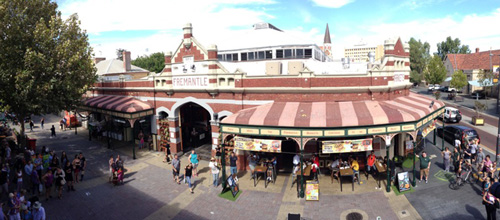
Have you visited?
Fremantle WA
Fremantle, the Port City, is located south-west of Perth at the mouth of the Swan River. Fremantle's vibrant nightlife, music scene and cafe' culture make Fremantle a perfect getaway from the bustle of Perth. Beaches, history, shopping, dining out, and more. VISIT FREMANTLE

Ever visited
Margaret River, WA
The Margaret River Region is an area of magnificent beauty on the western coast of the south west of WA. From the expansive shores of Busselton on Geographe Bay, through Dunsborough & Margaret River to Augusta, the Margaret River Region is fantastic. VISIT MARGARET RIVER

Visit the
Rainbow Coast
The Rainbow Coast is a national biosphere area and deserves our care and respect, please try to reduce your environmental impact when visiting the coast. The Albany, Denmark and Walpole region of the South Coast is known as the Rainbow Coast
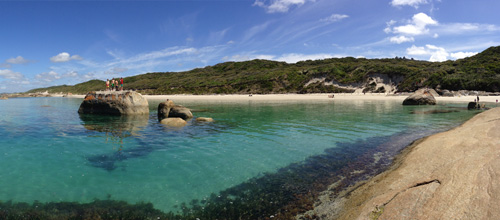
Have you visited?
Denmark WA
Denmark WA is one of the most beautiful places along the south coast as it has forests, beaches, rivers and waves. Everything you need for the perfect south coast holiday. Denmark Wineries are popular too! Info on Denmark Town including shopping, dining & history, VISIT DENMARK WA



